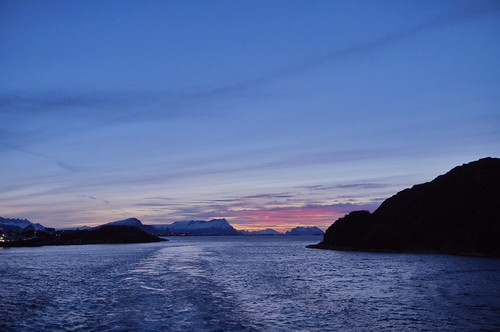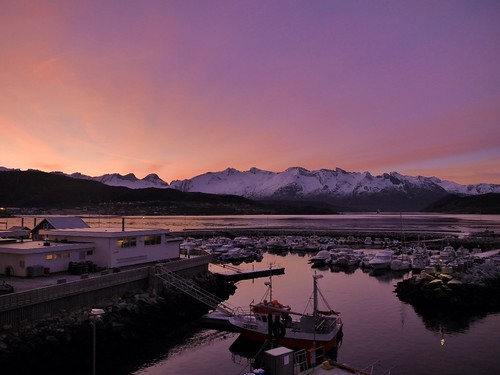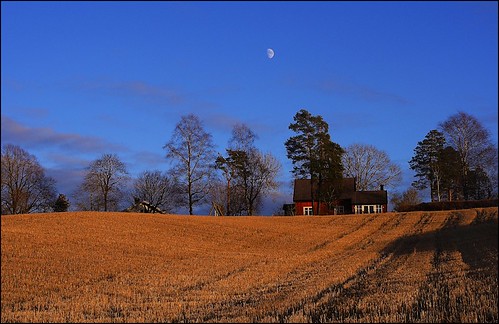Today a pano (4 photos stitched) from a fjord along E69 or E6 in Finnmark County.
January 27, 2014
January 25, 2014
ON TOUR to Norway Arctic, day 07 - exciting driving..
January 24, 2014
ON TOUR to North Cape, Norway - day 06 - FINALLY THERE
This was the big day after 6 days on the road and at the coastal express - Hurtigruten.
I met with the car Convoy going to and from North Cape the last kilometers (led by a big truck with a heavy snow plow). And let me tell: it was worth it.
From today 3 photos:
- A selfie by the North Cape symbol
- A pano from the North Cape platou
- Finally the Convoy ready for returning at 1.45 pm (regard the lack of daylight)January 23, 2014
ON TOUR to North Cape, Norway, day: 05 - Aurora Borealis
January 22, 2014
ON TOUR to North Cape, Norway, day 04: Bodø
January 21, 2014
ON TOUR to North Cape, Norway. Day 03
January 20, 2014
ON TOUR TO NORTH CAPE, NORWAY - DAY 02
January 19, 2014
ON TOUR TO North Cape Norway - day 01 - Trondheim
January 18, 2014
Going to North Cape, Norway
A silhouetted low light morning represents the even less light that is waiting up north at North Cape, Norway. My journey up there starts tomorrow morning with the first leg going to Trondheim in mid-Norway where I will board (also with my car) the coast steamer (Hurtigruten) MS Midnatsol monday morning.
Look for daily updates right here (depends on internet connections: Mobile broadband and/ or wifi)January 13, 2014
Norway - Golden January morning
From my village some 50km SouthEast of Oslo.
The sun these days raise around 09 AM and sets app. 3.45 PM.
Should there be any advantage of this it must be that there is no need to be up very early to catch the light from the sunrise - the few days that it is not complete grey with rain or snow.
To have more low light in the real north I plan to go to North Cape at 71DEG North starting Sun. Jan. 19th. If interested find more info to the right (presently).January 10, 2014
Norway in January - is this winter?
To day - January 10th. 2014.
50 km southeast of Oslo at app. 60 DEG North - and as you see no snow, no winter feeling - just as it use to be in spring time....
Is it all the global warm up? What do I know we had mild winters up here also a 100 years ago... (at that time probably no global warming as discussed these days).January 9, 2014
When the dambusters bounce bombed Møhne Dam in Germany
My interest for the Møhne dam in the photo was raised as we last summer was taking an overnight stop in the North-Rhine Westfalia region to go for a 50km bike tour around the Møhnesee (lake).
Absolute interesting bike tour and coming to the one end of the lake we suddenly could see this old dam in the lake Møhne (the dam constructed around 1910).
Thinking back to the time of WWII it seemed almost strange that this dam should have survived the war. Which was not what the English wanted. In fact they bounce bombed the dam with great success in 1943 - it was partially destroyed and it took a lot of resources to bring it back in working order for the Germans.
This video at Youtube give you some insight with clips from the heroic movie: "The dambusters":
www.youtube.com/watch?v=JUt5ysms3sU
For anyone with an interest for more - here something from the net:
On the night of May 16th, 1943, nineteen Lancaster bombers took off from Scampton in Lincolnshire. They had three primary targets: the Möhne, Eder and Sorpe dams and two secondary ones, the Lister and the Eneppe dams. Of the nineteen planes, five would be held in reserve during the attacks.
Gibson led the first attack. At 00.56 hours, the Möhne Dam was breached and by 01.54 hours so was the Eder Dam. The Sorpe Dam was attacked by planes from the reserve force but, though hit, it held out.
Just how low the Lancasters flew during the attack is shown by the fact that one Lancaster had to turn back as it had hit the sea on the journey to mainland Europe and lost its bomb.
The attack had huge propaganda value and made Gibson a national hero. Of the nineteen Lancasters that took part in the attacks with 133 crew, eight planes were lost with the loss of 56 men; three of these men survived to become prisoners-of-war. Gibson was awarded the Victoria Cross for bringing round his Lancaster to give covering fire to the Lancasters that were following up his attack on the Möhne Dam. 33 others members of 617 squadron were also decorated.
How successful was the raid?
Severe flooding occurred where the Möhne Dam was breached. 1,200 people were killed including nearly 600 forced labourers from Eastern Europe who were housed in a labour camp near Neheim. Six small electricity works were damaged and rail lines passing through the Möhne Valley were disrupted. But industrial production was not affected in the long-term. When the Eder Dam broke, there were similar results. Kassel, an important arms producing town, was reached by the floodwater, but little actual damage was done. Had the Sorpe Dam been breached, then the damage would have been much greater. The potential for a major disaster was recognised by Albert Speer who commented that:
"Ruhr production would have suffered the heaviest possible blow."
In the short and long term, the damage done by 617 squadron was repaired quite quickly. But the most important impact of the raid was that 20,000 men working on the Atlantic Wall had been moved to the Ruhr to carry out repairs to the damaged and breached dams. This work was completed before the rains of the autumn appeared.January 8, 2014
Germany - Crossing Elben with a car ferry
January 7, 2014
Spain: San Sebastian - Concha beach seen from Mont Urgull
2 photos stitched.
Absolute worth the little climb to go to the summit of the fortificated Mont Urgull not only to see the big beach and the city from "outside" - but also the layered mountain hills in the back of this beautiful city.
From the net:
The Urgull Mount is the most significant historical heritage in the city. Located in the very centre of Donosti, it has yet to be discovered by many of its inhabitants, as it is a place they only visit when they want to show their friends and relatives from other places around. They take them to the top of the mount so that they enjoy the wonderful views or in order to see the Sacred heart statue presiding over the summit.
The Beach of La Concha (Basque: Kontxa Hondartza, Spanish: Playa de La Concha is a beach in the Bay of La Concha (Shell, in Spanish, due to its shape) in San Sebastián (Basque Country). It is one of the most famous urban beaches in Europe.
It is a sandy beach and shallow substrate, in which the tide fluctuation affects greatly the area available for use. It can be considered an urban beach in widespread use.January 5, 2014
Waiting for the bus in San Sebastian, Spain
From the net:
It’s said that nothing is impossible. This is wrong. It’s impossible to lay eyes on San Sebastián (Basque: Donostia) and not fall madly in love. This stunning city is everything that grimy Bilbao is not: cool, svelte and flirtatious by night, charming and well mannered by day.
January 3, 2014
Surfers beach in San Sebastian - Spain
Beside the big Concha Beach in San Sebastian in the North of Spain this is another popular beach - especially for surfers in the neighboorhood.
Here from a visit in the end of November.
From the net:
Zurriola Beach went under extensive redevelopment in 1995 when it was enlargened considerably. It is located in front of the Moneo Cubes. This beach faces onto the open sea and attracts many surfers all year round. It has the same facilities as the Concha as well as a children’s club during the summer, a surfing school and surf boards for hire (all year round).






















